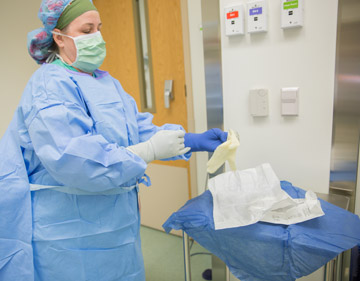Of the safety measures surgeons tend to turn their masks up at, double gloving ranks up there with safety sharps and smoke evacuation. But surgeons have loosened their grip on refusing to don a second pair of gloves. While nearly one-third of the 165 respondents to last month's Outpatient Surgery online poll say their surgeons never (18%) or rarely (13%) double-glove, more than two-thirds of our respondents say their docs double-glove for some (34%), most (15%) or all (20%) cases.
Ramon Berguer, MD, FACS, remembers when needlesticks were considered an accepted occupational hazard in the OR. It's been many years since Dr. Berguer and others in the medical community started preaching the importance of double-gloving. By the early 2000s, the research showed the safety measure offered strong protection for healthcare workers against sharps injuries and the threat of bloodborne diseases like HIV and hepatitis. Still, it's taken a while to catch on.
Fast forward to 2019, and Dr. Berguer says he sees steady progress in the effort to get surgeons to double-glove, estimating that half of surgeons double-glove today.
"That might be slightly optimistic, but it tells me we've made progress." says Dr. Berguer, a general surgeon at Contra Costa Regional Medical Center and John Muir Medical Center, both located in California. Everyone wants to keep their staff protected against sharps injuries and unnecessary contact with patient bodily fluids, and double-gloving is a great place to start. Research indicates surgeons and first assistants suffer nearly 60% of the injuries that happen in the OR. Scrub nurses and scrub technicians are next, accounting for about 19% of OR injuries. Putting on a second pair of gloves is one of the simplest things your OR staff can do to stay safe. If you're not double-gloving, these OR safety experts make the case for you to start.
.svg?sfvrsn=be606e78_3)


.svg?sfvrsn=56b2f850_5)